|
(c)
Copyright Bartók Archives of the Hungarian Academy of Sciences
Institute for Musicology, 2004-2005
“The More Rigid Framework”
|
| |
|
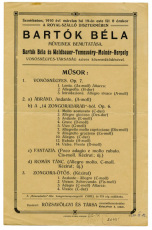 |
|
...I had the opportunity of
studying the piano Bagatelles (op. 6), and I must
confess that I was somewhat disconcerted by the
surprising liberty of their idiom. ...from the Second
Quartet to the Music for Strings and Percussion, my
admiration has steadily grown. Soon after its
publication, the quartet was performed by Yvonne Giraud,
Delgrange, Darius Milhaud and myself, not without
faults, for the work is quite difficult.
Arthur Honegger, “Preface,” in Serge
Moreux, Béla Bartók (London, 1953), 9
It was [at the Eschig music store] that I purchased
Bartók’s First Quartet. With my mates from the
Conservatoire, I played quartets regularly at my place
and we were enthusiastic about this work full of life
and truly individual lyricism.
Darius Milhaud, “Hommage à Bartók,” Béla
Bartók. L’Homme et l’Oeuvre, special issue of La Revue
Musicale, no. 224 (1955), 16
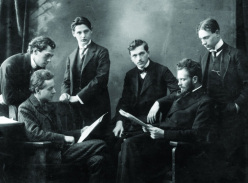 |
|
3rd movement. In this movement I tried to use the
so-called “Bulgarian” rhythms, partly also in imitation
and counterpoint. “Bulgarian” rhythm comes about when
very quick rhythmic values (MM 300–400 or more) are
grouped asymmetrically thus, e.g. such as 4+2+3 (and not
3+3+3!). I don’t know whether you are familiar with this
kind of rhythm. If not, then preparatory exercises are
useful that can be done also without the violin...
Bartók on his Fifth Quartet to violinist
Rudolf Kolisch, October 23, 1934
3rd movement. We worked on this movement the most as
it is the most difficult and we hope that we are now
quite familiar with the Bulgarian rhythm. The stretto
in the recapitulation is certainly one of the most
difficult passages in the literature; it is all the more
pleasant to master it.
Rudolf Kolisch to Bartók, March 14,
1935, German original in Documenta Bartókiana 3, ed.
Denijs Dille (Budapest, 1968), 173
|
|
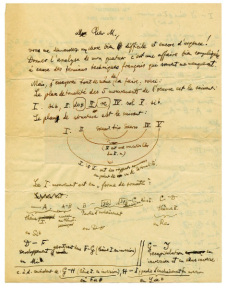 |
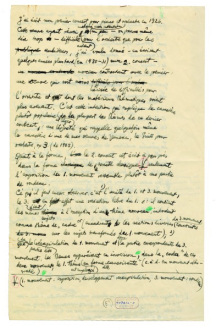
 |
|
Dille: Do you think, dear Maestro, that there was
some kind of a difference in trend or technique between
your “pure musical” works—the famous quartets and piano
concertos, and the three stage works we know—on the one
hand, and your freer works: the Dance Suite and the
Rhapsody for violin and orchestra on the other?
Bartók: The difference is merely superficial; it
relates, perhaps, to the task and the subject-matter. As
you will have noticed, the technique is identical, the
pure musical forms serve as a basis for freer musical
formulae, which, in turn, have provided melodic and
rhythmic models. However, clearly one does not use folk
melodies when writing in pure musical forms, at least
not without difficulty, because they are generally
unsuitable in their original forms for the treatment
they have to undergo. The melodies of my string
quartets, etc. do not essentially differ from folk
melodies; the framework is more rigid, that’s all. By
the way, you know that I like technical elaboration very
much, that I never present the same musical thought
twice in the same way, and that I never repeat one part
identically—which shows my great love for variation and
the transformation of themes. The idea at the end of my
Second Piano Concerto, where the first subject comes
back in retrograde, is not at all a playful idea: this
extreme diversity which is characteristic of our
national music, is part of my nature.
An interview with Bartók by Denijs
Dille, Brussels, February 2, 1937, in Dille, Béla
Bartók. Regard sur le passé (Louvain-la-Neuve, 1990), 28
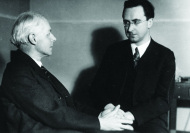 |
|
Movement I, in A. On certain principles fairly
strictly executed form of a fugue, that is, the 2nd
entry appears a fifth higher; the 4th again a fifth
higher than the 2nd; the 6th, 8th, and so on, again a
fifth higher than the preceding one. The 3rd, 5th, 7th,
and so on, on the other hand, each enter a fifth lower.
After the remotest key—E flat—has been reached the
climax of the movement) the following entries render the
theme in contrary motion until the fundamental key—A—is again reached, after which a short coda follows. N.B.—(1) several secondary entries appear in a stretto.
(2) Some entries show the theme incompletely, that is in
fragments.
Movement II, in C. Sonata form (secondary theme in G).
In the execution the theme of Movement I also appears,
however, in altered form, and so does an allusion to the
main theme of Movement IV.
The
recapitulation changes the 2/4 rhythm of the exposition
into a 3/8 rhythm.
Movement III, in F sharp. “Bridge form” [arch form]:
A, B, C, B, A. Between each section a part of the theme
of Movement I appears.
Movement IV, in A. Formula: A+B+A, C+D+E+D+F, G, A. The
G part (measures 203–234) shows the main theme of
Movement I which is extended, however, by diatonic
expansion of the original chromatic form.
Bartók, “Structure of Music for Strings,
Percussion and Celesta” (1937), in Béla Bartók Essays,
ed. Benjamin Suchoff (London, 1976), 416
|
|
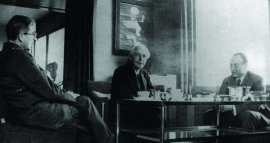
 |
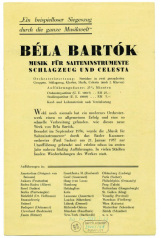 |
|
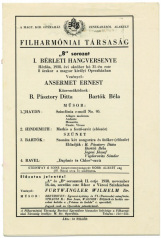 |
|

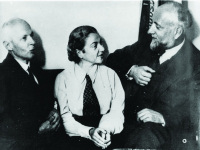
Even the most abstract works, as for instance my
string quartets, where no such imitations appear, reveal
a certain indescribable, unexplainable spirit—a
certain je ne sais pas quoi—which will give to
anyone who listens, and who knows the rural backgrounds
the feeling: “This could not have been written by any
but an Eastern European musician.”
Bartók, “Hungarian Music” (1944), in
Béla Bartók Essays, ed. Benjamin Suchoff (London, 1976),
396
|
|
|
| |

|
|